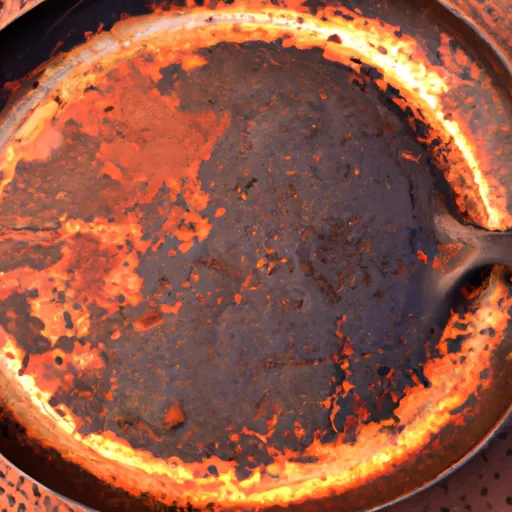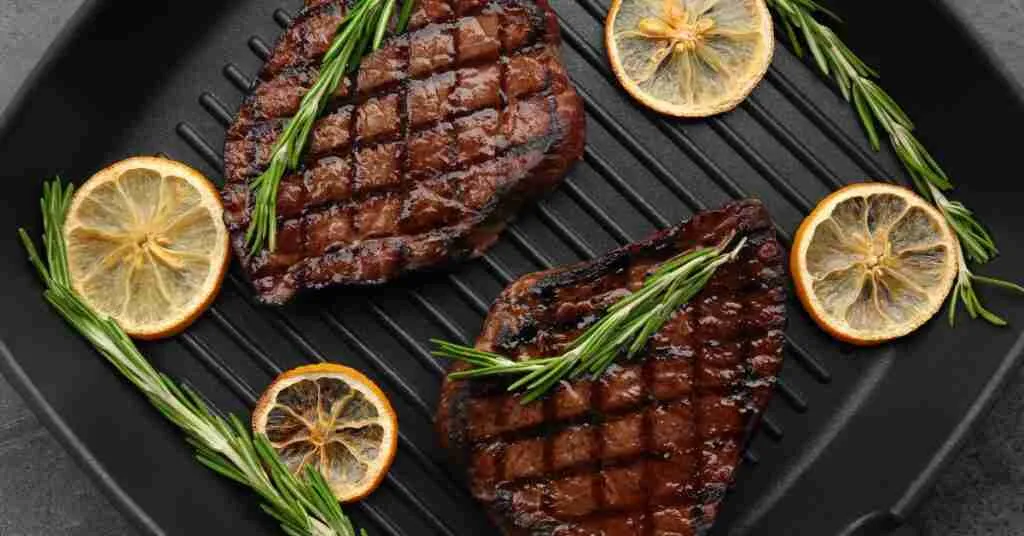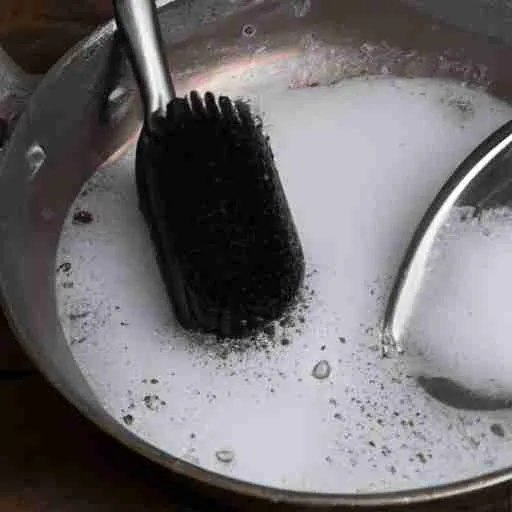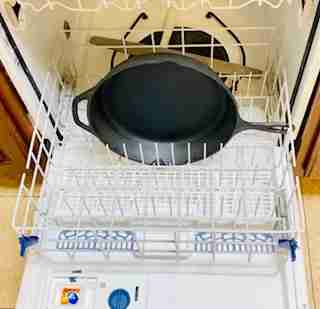Cleaning your
In this article, we’ll walk you through three foolproof methods of how to clean a
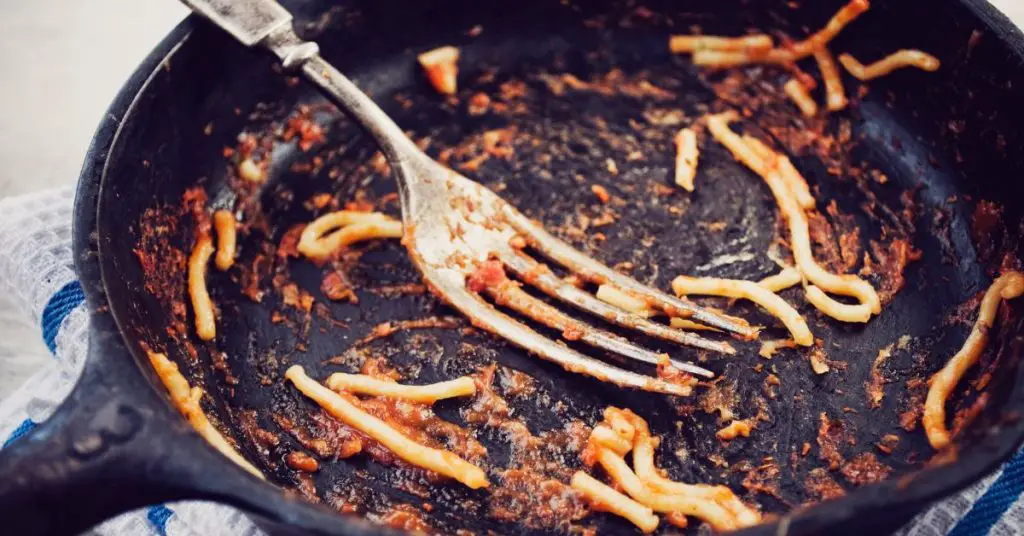
Table of Contents
Why Proper Cleaning Matters
What attracts most of us about cast iron skillets and other pieces of
But for this to happen successfully they require special care. Unlike other cookware, like Teflon-coated non-stick pans, stainless steel, or aluminum, cast iron relies on a layer of polymerized oil called “seasoning.” This bonded layer does two things:
- It helps to prevent rust from forming and potentially damaging the entire piece of cast iron and
- It helps to seal any imperfections and unevenness from the manufacturer’s molding process, which results in creating a natural, non-stick, slick cooking surface.
Improper cleaning methods and techniques, like using chemical-based cleaners, harsh detergents, or soaking in water for extended periods, can strip this seasoning, leaving your skillet vulnerable and susceptible to food sticking, at best, and to rusting and pitting at worst.
It doesn’t have to be all bad news, though; the good news is with a few simple techniques that we will explain in full detail below, you can clean your
Tools You’ll Need
Before we get into how to clean and season a
- A stiff bristle brush and warm water help to remove any loose food particles, and a stainless steel chainmail scrubber works so easily, too, without any damage to the cast iron.
- Plastic scrapers help to loosen stuck-on food particles once they are soaked and softened.
- A soft towel, paper towel, or T-shirt works great for drying, too.
- Quality oil (Crisco, grapeseed, lard, and
avocado oil , are good options for re-seasoning. - Kosher salt, sea salt, or table salt work wonders for a light abrasive cleaning when added to oil for a salt/oil paste. This is my favorite way to clean burnt-on food and carbon buildup, as you will see in the following video.
How To Clean A Cast Iron Skillet : 3 Easy Methods
Clean Right After Cooking
The easiest way to keep your skillet clean is to rinse it immediately after use.
- Let the skillet cool slightly: Avoid thermal shock by not rinsing a screaming hot skillet with cold water.
- Rinse with hot water: Use hot water to prevent cracking or warping. You never want to add cold water to a hot skillet!
- Scrub with a stiff brush: Gently remove food particles without scratching the seasoning.
- Dry thoroughly: Twel dry and then place the skillet on low heat to evaporate any remaining moisture.
- Apply a light coat of oil: Wipe a thin layer of oil all over the surface to maintain the existing seasoning and prevent rust from forming.
Pro Tip: Cleaning while the skillet is warm makes it easier to remove food particles, but be careful not to burn yourself!
Boil Away Stubborn Food
For stuck-on food that won’t come off with a simple scrub, boiling water in the skillet is your next best option. If you are not able to clean it immediately after cooking, this method is very easy to do on the stovetop.
- Scrape off what you can: Use a plastic scraper or wooden spatula to remove all the loose bits of food before adding any water.
- Add water and heat: Pour a small amount of water into the skillet and place it on the stovetop. As it heats up, the water will loosen the stuck-on residue.
- Scrape as it boils: Use a wooden or metal spatula to scrape off food particles as the water boils. (Yes, metal is okay as long as you are not excessively scraping or gouging into the cast iron).
- Rinse and dry: Once the food particles are loosened, pour out the water, rinse with hot water, and use the stiff-bristled brush once again, to remove any loose remaining bits and then dry the
cast iron skillet thoroughly. - Re-season: Once it is clean and dry, add a thin coat of oil and heat the skillet to ensure it’s protected. Always wipe out any excess oil.
Pro Tip: This method is excellent for cleaning dried gravy, sticky sauces, or stuck-on eggs that have been left on the skillet.
Salt and Oil Scrub
This is by far my favorite method for cleaning those stubborn carbon buildups and impurities caused by burnt-on food particles that seem impossible to remove.
I highly recommend you try this method, not as a last resort, but because it is beneficial every time you clean and season your
- Heat the
cast iron skillet : Place the skillet on the burner and heat. - Add oil and salt: As it heats up, add a couple of tablespoons of oil and a handful of kosher salt to the pan. You’ll need enough salt to mix with the oil to make a thick paste.
- Scrub with a paper towel: Take a couple of paper towels and wipe the paste all over the inside of the skillet. The salt acts as a gentle abrasive, lifting and removing food particles and impurities without damaging the seasoning.
- Rinse thoroughly: Rinse out the salt and oil mixture with hot water.
- Dry and re-season: Dry the skillet and apply a thin layer of oil to protect it before storing it away until your next use.
Pro Tip: This salt scrub method pulls out impurities while the oil in the paste adds to the seasoning layer.
Common Mistakes to Avoid
- Using soap excessively: Mild detergent soap like Dawn is okay, but avoid harsh chemical cleaners.
- Soaking the skillet in water: Extended oaking leads to rust. Never put cast iron in the dishwasher!
- Skipping the drying step: Even small amounts of moisture can cause rust, so be sure to dry completely.
FAQs About Cleaning Cast Iron Skillets
How do you clean a cast iron skillet after use?
Wipe out any loose bits of food particles. Wash with warm water while using a stiff bristle brush.
Can I Use Soap to Clean Cast Iron?
Yes, a small amount of gentle soap is fine for well-seasoned cast iron.
What Should I Do If My Skillet Rusts?
Scrub the rust with a salt/oil paste, rinse, and re-season the skillet immediately.
Can I Put Cast Iron in the Dishwasher?
No, dishwashers strip the seasoning and cause the skillet to rust.
For more questions about how to care for your cast iron, check out our frequently asked questions article.
How To Maintain Your Cast Iron Skillet
- Clean after each use: Rinse and scrub with hot water.
- Dry thoroughly: Moisture is the enemy of cast iron.
- Season regularly: Apply a light coat of oil after cleaning to maintain the seasoning. This can easily be done on your stovetop.
- Store in a dry place: Never put your cast iron away wet or moist. Moisture will cause your skillet to rust.
Conclusion
Cleaning a
